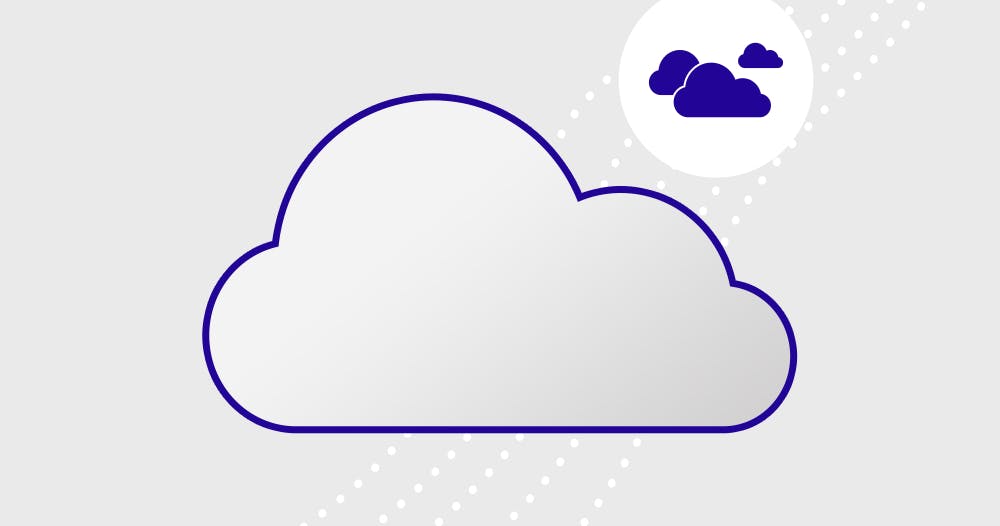Most e-commerce businesses that think about cloud adoption have a one-step at a time approach. They address specific needs as they arise. At the opposite pole are the online shops that don’t have a strategy in place and are subject to “cloud sprawl”. Cloud sprawl usually occurs when different departments inside the same organization are contracting for cloud services independently of each other. As a result, this situation drives up costs and can lead to issues with compliance and security.
After reading this article you will know:
- What cloud adoption means for e-commerce businesses
- The benefits of cloud adoption for e-commerce businesses
- How to set up a cloud adoption framework for your e-commerce business
Let’s begin!
What Cloud Adoption Means for E-commerce Businesses
There are many ways cloud adoption influences e-commerce businesses:
- an architectural level
- a backend service level
- a strategy level
- an industry level
Let’s take them one by one.
Cloud Adoption Influences an E-commerce Business Technical Architecture
E-commerce has two main components: the technical component and the business component. In other words, the hardware and software and the transactions between customers and the business happen on top of the technical component.
Cloud computing enables e-commerce businesses to rent rather than purchase hardware and software. The fact that helps them decrease the cost of system building. Before cloud computing e-commerce businesses would purchase the needed hardware and software. For small and medium businesses this meant a high percentage of the operational budget. But now, online shops can pay for resources based on their needs.
By tailoring resource purchases to their needs, e-commerce businesses solve the problem of resources utilization efficiency.

Think of Black Friday, the most important event for any e-commerce business. The spike in traffic associated with Black Friday demands a robust technical architecture. But, building such an infrastructure blows a big hole in business owners' pockets. Once the traffic resumes to normal, the investment will be lost as the systems will remain idle.
By adopting a cloud computing solution, e-commerce businesses, can purchase only the resources they need on a monthly basis and add more products/services to their subscription-only when needed. This reduces operational costs considerably.
Cloud Adoption Reduces Business Operational Expenses
When buying their own hardware and software, e-commerce business owners must also consider the costs associated with that investment. Costs like electricity, space rent, software licenses, salaries for the people in charge of maintaining the technical architecture, etc. So, by outsourcing the technical infrastructure, owners will save the money they would have spent on hardware purchases. And, moreover, they will save money by eliminating the costs associated with maintaining that infrastructure.
Cloud Adoption Influences an E-commerce Business Strategy
Huge data storage is a big problem for growing e-commerce businesses. Having your own data center is inefficient even for ever-growing e-commerce enterprises. Small and medium businesses don’t have the financial resources to build their own data centers. That‘s why most online shops decide to opt for a hosting provider. A decision that limits the possibility of online business development and increases operational costs.

By adopting a cloud computing solution, e-commerce businesses of all sizes can take different advantages. For example, outsourcing backend infrastructure building and application software services. The pay-as-service charging mode significantly reduces operational costs.
Cloud Adoption Influences the E-commerce Industry Chain Structure
Before cloud computing the e-commerce industry chain was composed of:
- hardware suppliers
- software developers
- Internet service providers
- system integrating providers
- service suppliers
- e-commerce businesses
- customers
Now, most of these components are supplied by the cloud service provider. As a result, the structure of the e-commerce industry chain has been changed.
The Benefits of Cloud Adoption for E-commerce Businesses
1. Scalability
E-commerce scalability is crucial during Black Friday, Cyber Monday, and the Holidays. Cloud computing enables e-commerce businesses to tailor subscriptions to their needs. Owners can upscale or downscale services according to demand, traffic, and seasonal spikes. It’s vital to also scale your infrastructure as you grow. Because businesses grow year over year.
2. Speed
An Akamai study found out that 40% of customers abandon a web page if it takes more than three seconds to load. Even Amazon experienced an increase of 1% in revenue for every 100 milliseconds improvement to their site speed.
For e-commerce businesses, speed plays a crucial role in the conversion rate. A sudden spike in traffic can slow down a website and make it unresponsive. Such situations can be avoided. A cloud service provides e-commerce businesses with greater bandwidth, computational power, and storage.
3. Cost reduction
Paying per-use means e-commerce businesses consume services according to their needs. As the business grows, instead of investing in additional hardware and software, owners can just increase their subscriptions. Therefore, the costs of developing and maintaining an IT infrastructure are cut down.

4. Redundancy
Customer data is of utmost importance for any business. If catastrophic data losses or security threats occur, redundancy (the built-in duplication of systems, data, equipment, and other components) helps overcome the disaster and resume the business in a streamlined way.
Unlike in-house solutions, cloud-based architectures are disaster tolerant. A cloud-based platform with built-in redundancy can save e-commerce businesses from data loss. It keeps the data secure, backed-up, and easily accessible.
How To Set Up a Cloud Adoption Framework for Your E-commerce Business
By adopting a cloud computing solution e-commerce businesses can address rapidly changing customer demands at a faster pace than traditional solutions. There are multiple cloud adoption frameworks to choose from.But, the decision process can be reduced to four steps:assess, plan, adopt, and optimize.
Step one: Assessment
For efficient and effective migration, e-commerce business owners should start with a pros & cons evaluation:
- Analyze cloud deployment challenges and opportunities
- Analyze the business value and IT feasibility (this has a significant impact on the success rate)
- Evaluate risks and success stories
- Evaluate different cloud vendors to determine the best solutions
Step two: Planning
The cloud adoption framework should be customized for each business. Some will need software as a service (SaaS) solutions. Some will need infrastructure as a service (IaaS) solutions or some will need a platform as a service (PaaS) solutions.
E-commerce business owners should identify the applications that are quick to market and critical to business in terms of revenue and customer satisfaction. For early adopters, stand-alone solutions are best to choose, because are simple to migrate. So, the disruption is limited to that application. In other words, for businesses that want to enhance their customer and business value through cloud services, it’s best to think about IT innovation, productivity, agility, and efficiency while evaluating applications for potential cloud deployments.
In this situation, the IT architect and development teams should also be consulted. This will help e-commerce business owners develop a cloud adoption framework that will result in a successful cloud deployment. And also a well-managed one.

Step three: Adoption
Everything has been planned. Now, it’s time to start the adoption process. E-commerce businesses should use the cloud deployment architectures they developed in the planning phase and develop application migration strategies, use cases, and scripts.
To make the adoption process even more efficient, e-commerce businesses can use cloud infrastructure management platforms. This type of platform usually comes with time-saving features and optimizations for performance, security, and development. It offers easy infrastructure management, automated provisioning, one-click app deployment, automated real-time monitoring, and ops management. In conclusion, everything your development team needs to significantly reduce their workload.
Step four: Optimization
Cloud adoption does not end once all systems are up and running. Strategies should be optimized too. Because the business grows and needs will change.
When done right, a cloud adoption framework should ensure:
- The ability to extend or create new applications faster;
- Improved customer value propositions;
- Flexible scalability, budgeting with lower costs;
- Faster business innovation;
- Shared resources and strategies.
Setting up a cloud adoption framework before taking the final decision it’s essential, but only if you want to get all the benefits from the cloud.
So, if you are facing problems to get started, you should for sure discuss with an expert. Cloud computing consultants play an important role in the adoption of a strategy that suits your business needs.
Cloud experts from Bunnyshell provide custom solutions for cloud migrations, architecture, and managing of applications on every cloud.
So, if you are looking for some help, we’re here.
